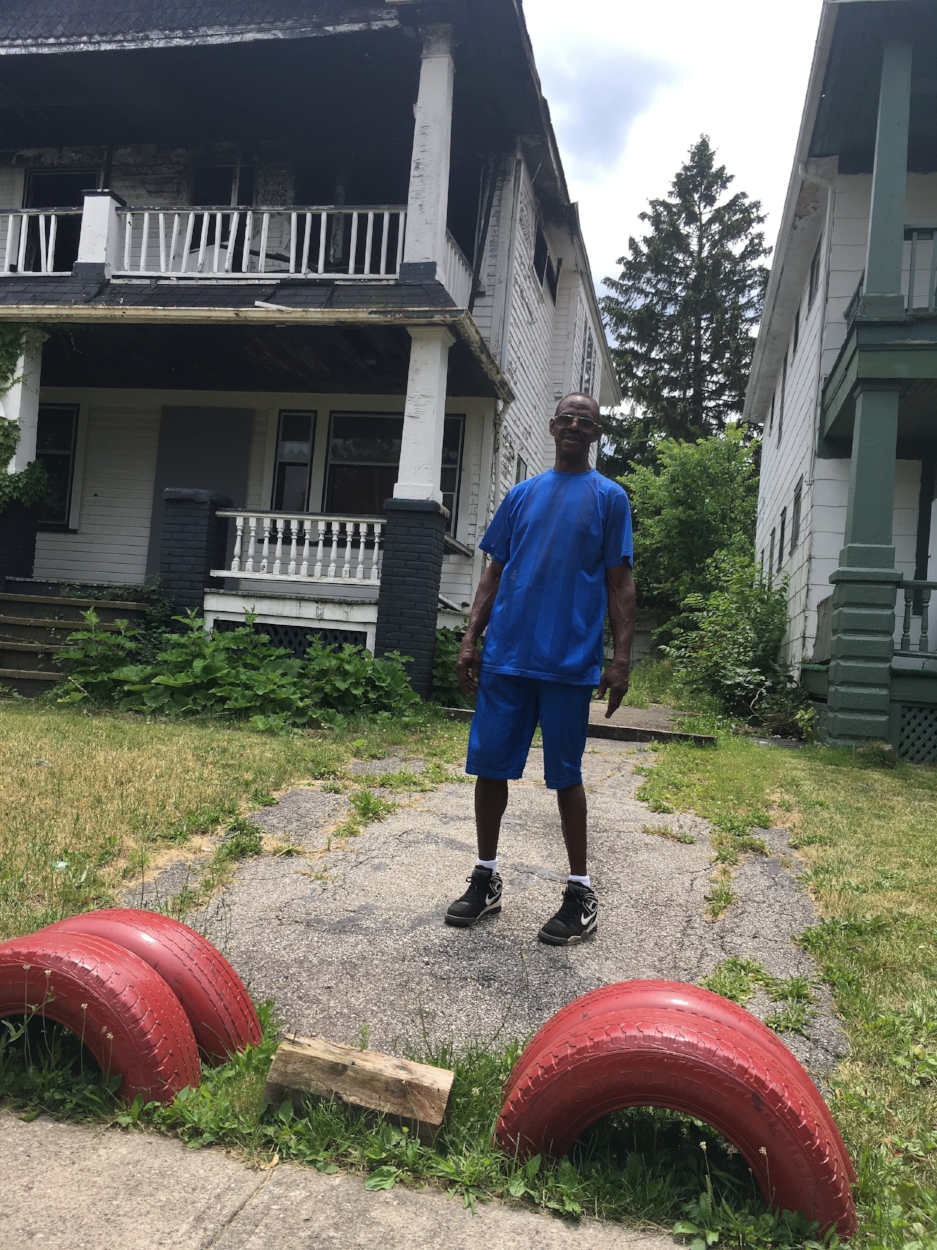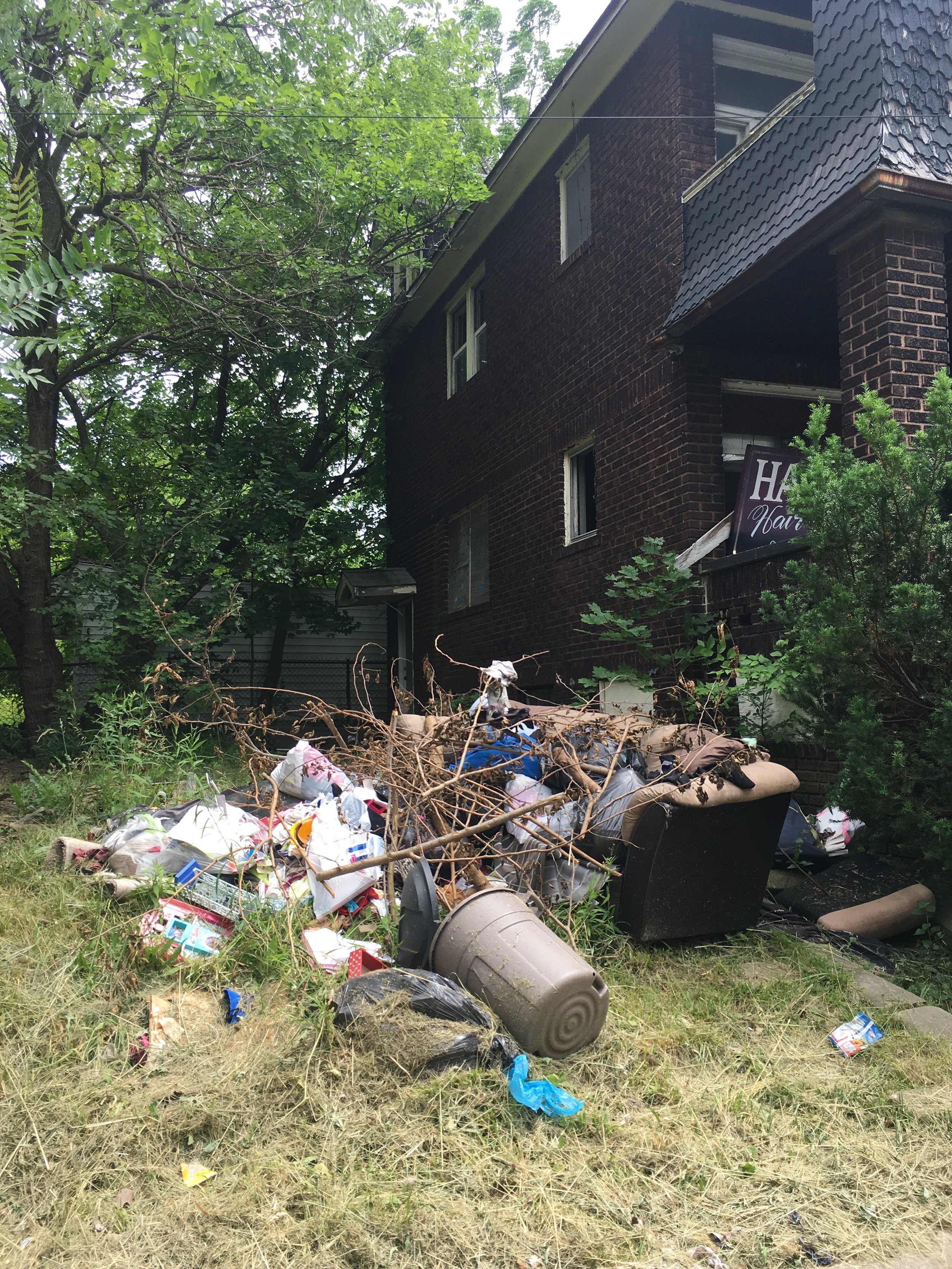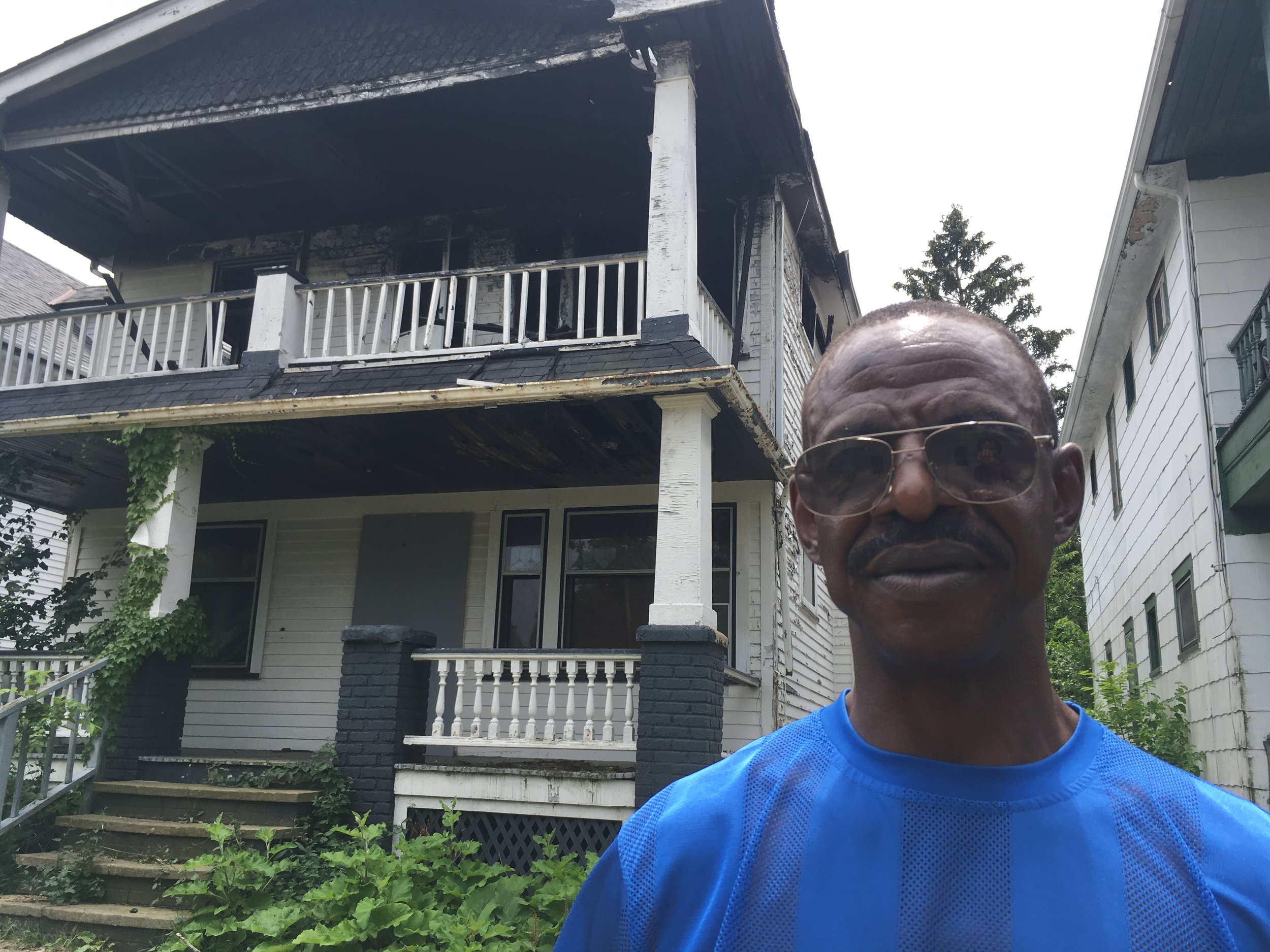Donald Wilson stands on his front porch, surveying Parkview Avenue, the street where he lives in Cleveland's Woodland Hills neighborhood.
"I cannot believe that people do not have that much respect for those who do live here," he says. "I mean, they wouldn’t do it next door to their homes, I know they wouldn’t. But they do it in my neighbors’ yards."
Parkview has been his home for decades. Some people, though, see it as one big trash can.
He points across the street.
"You’ll see there had been some illegal dumping," he says. "That home is vacant, unoccupied."
I follow the direction of his pointing. There's a big pile of trash at the rear of the house's driveway.
"So people back their cars up in there and they dump in the backyard?" I ask.
"Yes, and for the most part they do it where it’s vacant houses on either side, but here they chose to do it where there’s an (occupied) home on either side," he says.
Donald tells me he's done all the things you’d expect. He calls the city, his councilman, his local neighborhood organization. And sometimes they help out. But still, the trash just keeps coming.
So he and a group of neighbors decided to fight back themselves. By taking some of that trash that gets dumped, and turning it into a warning sign.
'They choose dumping'
He leads me to the most recent of a half-dozen or so dumps within walking distance of his house.
It's sitting in a vacant lot next to an unoccupied house, and contains a couch, some tree debris limbs, bags full of clothing, paperwork, toys...
It all started, he says, about 8 or 9 years ago. He thinks there are a couple reasons. First, the foreclosure crisis meant that Woodland Hills started emptying out faster than ever, leading to hundreds of vacant houses and unused yards. Second, to help balance their budgets, Cleveland and some inner-ring suburbs started charging people for trash pickup. And raised their fees for, big, bulky stuff like mattresses and furniture. What they call “excessive set outs.”
"They either have too much to dump or only one week a month to put out large bulk items," Donald says. "And they’ll get fined when they do it not that week. So they choose illegal dumping."
The trash doesn’t just look bad, he says. It’s also really dangerous. Kids can get hurt stepping on broken glass. There are big, sealed bags of mysterious objects that may or may not be hazardous.
After seeing this happen for months, Donald and some of his neighbors started organizing cleanups every other Saturday morning. They put on big latex gloves, grab a few of those long-reach trash-pickers with claws on the end, and get to work.
An idea dawns
It was on one of those Saturdays a few months ago that Donald got an idea.
"We were finding tires dumped on treelawns in the street," he says. "So in our cleanup efforts we were taking these tires and putting them on the curb."
It struck Donald that instead of just throwing the tires out, maybe they could serve a purpose.
"I said, 'What if we try to use those tires as barriers? What if we cut them and put enough of them together that it can be a barrier that says, stop, don’t do this."
Donald cut some tires in half, into semi-circles. He bolted a half dozen or so, curved side up, to a four by four, so they’d be too heavy to move.
Donald walks me to a house around the corner, to show me his first barrier.
It sits right at the end of the driveway, a few feet back from the sidewalk.
And the way it’s positioned, the tires look almost like a dragon tail, emerging from the asphalt. It’s not just the shape of them, but the fact that they’re painted a bright, fire-engine red.
"Why red?" I ask.
Donald doesn't hesitate to answer.
"Because red says stop," he says. "It really says stop."
Stop. Don’t trash my neighborhood.
"This is where I live at, this is where I work at, this is where I pray at," he says. "It’s my neighborhood and I want to see it thriving."
Neighbors approve
A couple of Donald’s neighbors step outside to say hello. His neighbor Eileen says she’s a big fan of the red tires.
She remembers when she first saw them.
"I thought, 'Well golly, what’s that all about?' And then when i found out I said, 'That is just perfect, seriously. Just perfect.' Because they do do a lot of dumping."
No patent pending
Donald’s a pretty modest guy, so he’s not trying to patent his tire barriers or tell other neighborhoods where dumping is happening that they should use them too.
Right now, he’s just watching his first couple installations. Making sure they work. So far they are, but he doesn’t underestimate how persistent dumpers can be.
"A contractor may just roll right over these with their big dump trucks, I don’t know," he says. "I hope not. I hope it’s gonna work, because we need to do something to prevent it."
I ask if he has a name for the barrier project. Like, the Red Tire Initiative, or Project Red Tire. Something snappy to help them raise money or awareness.
He says no, not really.
"We haven’t titled it anything," he says. "Just effort. That’s it. Just effort to prevent the dumping."
Effort to prevent a neighborhood from being seen as disposable itself.



